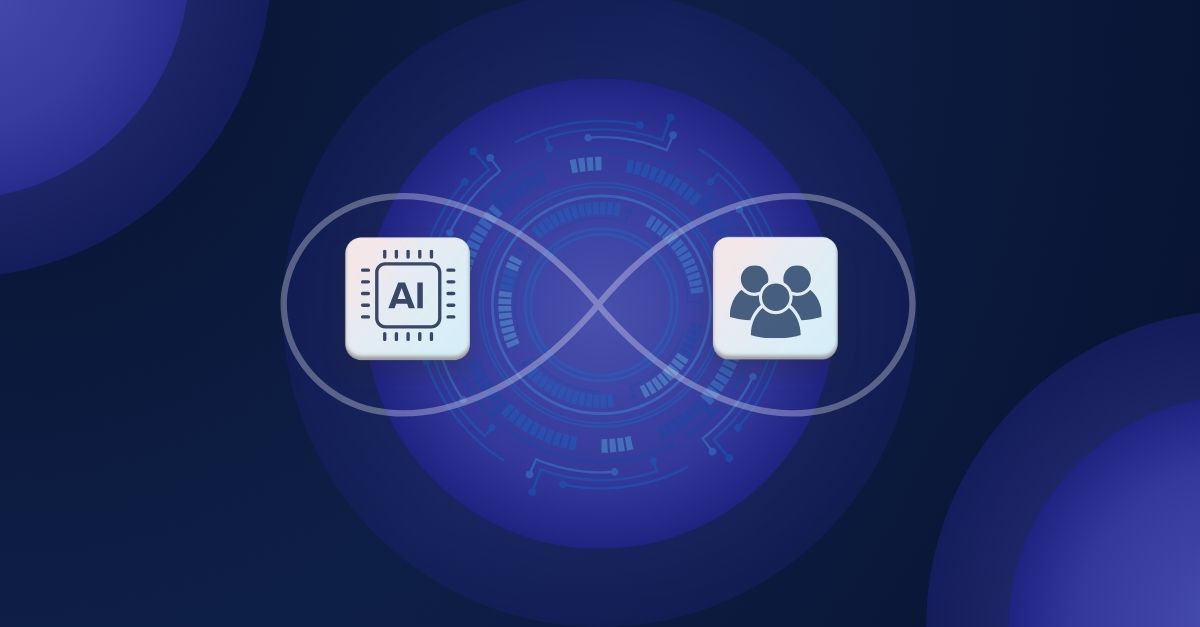When insurers talk about AI adoption, the conversation often centers on technology: model accuracy, data pipelines, and deployment timelines. Yet technology is only half of the story. Real progress happens when people understand how to use it, trust it, and apply it with purpose. The most advanced systems add little value if the teams they support are unsure of their role or reluctant to rely on them.
This article introduces a people-first framework for AI-enablement in insurance. It connects thoughtful onboarding, measurable outcomes, and the human skills that bring modern technology to life.
The Overlooked Gap
AI can create meaningful results across the insurance workflow – from triaging new submissions to summarizing complex claims – but only when two things are true:The person using it understands what they want to achieve.
- The AI has the right data and context to help.
- The person using it knows what they are trying to accomplish
The real gap sits between human intent and system context. Too often, AI is introduced as a tool without supporting the judgment it is meant to enhance. The phrase “human in the loop” is used often, but it misses the point. The human is not simply checking the AI’s work; they are deciding whether its output is useful in the first place.
AI delivers the greatest impact when it works alongside people rather than in place of them. Once teams see how it can support their judgment and amplify their strengths, it becomes a trusted part of how they work.
Why Frontline Teams Make or Break AI Adoption
AI does not transform a business on its own. People do. Executives may sponsor the initiative, but it is the underwriter assessing a submission or the claims adjuster reviewing a complex case who determines whether AI earns a place in their daily workflow.
These users bring a unique perspective shaped by years of professional judgment and experience. They are not asking how advanced the technology is. They want to know whether it helps them do their job better, whether they can rely on it, and whether it threatens to replace their expertise.
Some adopt quickly and see results. Others hesitate because the system does not meet them where they are. For insurers, this is where enablement matters most. When AI is designed and introduced in a way that respects how insurance professionals work, adoption follows naturally.
The path to success is not more technology. It is about helping people understand how this technology supports their decision-making and strengthens the skills that make them the experts in the first place.
Where Enablement Breaks Down
For many frontline users, AI can feel unpredictable. Traditional software solutions deliver clear, repeatable results, while AI operates on probabilities that require iteration and refinement. For professionals in actuarial, underwriting, or compliance roles who are trained to value precision, this uncertainty can make the technology difficult to trust.
Hype adds to the challenge. When AI is promoted as “all-knowing” or “effortless”, the reality of its learning curve can create frustration and skepticism. Experienced users eventually learn to treat AI as a collaborator, not a calculator.
They discover that imperfectness does not mean ineffective; it means the tool must be guided through context and judgment.
To drive adoption, insurers need to replace hype with clarity. Success comes from helping teams understand where AI adds value, where it does not, and how to use it in ways that support confident, informed decision-making.
Rethinking AI Onboarding
Successful AI adoption begins with clarity of purpose. Insurers need to align each initiative with specific, measurable goals that connect directly to day-to-day work. Rather than introducing AI as a broad capability, start with the outcomes that matter most. How can it help underwriters analyze submissions faster? Can it help claims teams surface relevant precedents to inform decision-making?
Complex outcomes can be broken into smaller, measurable milestones that create quick wins for users building confidence over time. When onboarding maps to the priorities of each team, it helps translate technical capability into practical value.
Those insurers seeing the strongest results from AI are moving beyond generic training and adopting use-case-driven onboarding tailored to each role. At its core, this approach should:
- Explains what AI is good at – such as summarizing information – and where it falls short – such as producing deterministic outputs. Setting this context early helps users know what to expect.
- Normalize iteration by setting the expectation that refining prompts, clarifying goals and learning through repetition is part of the process
- Train users on real scenarios that reflect their actual work such as triaging complex submissions or comparing policy language. The more relevant the exercise, the faster the learning will stick.
- Reinforce progress through follow-ups and peer exchange to create a culture of confidence and shared learning
When done well, onboarding becomes more than training. It becomes a transformation that gives people the clarity, confidence, and context to make AI a trusted part of how they work.
What Executives Should Be Doing Differently
Trust in AI does not start with technology. It starts with leadership, and executives play a critical role in setting direction, defining success, and creating the conditions for adoption to take hold across the organization.
The most effective leaders are anchoring AI initiatives in business strategy and communicating how success will be measured. They connect outcomes to clear objectives such as expanding underwriting capacity, improving claims resolution times, or reducing manual work across submissions. These precise goals give teams a shared purpose and a way to see progress in tangible terms.
Collaboration is equally important. Partnering with functional leaders to identify opportunities for efficiency or innovation helps translate enterprise strategy into actionable use cases. When AI is framed to achieve outcomes that were previously out of reach, it moves from abstract to essential.
Defining success at both the individual and organizational level brings accountability and alignment into focus. Metrics such as time saved, improved accuracy, or faster decision-making shows progress for teams, while enterprise measures like combined ratio, loss ratio or expense ratio reveal impact at-scale.
When top-down direction meets bottom-up enablement, AI adoption becomes a shared effort. The result is a culture where trust grows naturally because people can see how their work contributes to meaningful business outcomes.
The Future Belongs to the Curious
AI will not replace insurance professionals, but it will change what defines excellence. The most successful teams will not be the most technical; they will be the most curious. They will ask better questions, explore new ways to use information, and adapt as the tools evolve.
As AI continues to expand across underwriting, claims, and operations, the human skills that matter most will become even more valuable:
- Curiosity to explore insights and challenge assumptions
- Judgment to know when to rely on AI and when to trust their experience.
- Communication to explain, contextualize, and collaborate with AI outputs .
- Resilience to learn through iteration and improve with each try.
These qualities define the professionals who will lead the next era of insurance. They are the ones who turn data into understanding and innovation into trust.
Final Thoughts
The next frontier of AI insurance will not be defined by more technology or larger models. It will be defined by how well organizations equip their people to use these tools with confidence and accountability.
Insurers that succeed will invest as much in their people as they do in their capabilities and platforms. They will approach AI adoption as a partnership between leadership and teams, pairing thoughtful onboarding with clear goals and measurable outcomes.
Progress will come from those who understand that technology alone does not create value. Your people do. When your people are supported, trusted and empowered, they can turn AI from potential to performant.



